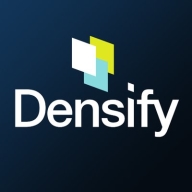


Densify and Spacelift compete in the cloud management and infrastructure automation category. Densify is favored for its cost-saving features, while Spacelift is known for strong automation capabilities, despite potentially higher costs.
Features: Densify offers cloud optimization capabilities, predictive analytics, and cost management for automated resource allocation. Spacelift facilitates the automation of CI/CD pipelines, infrastructure as code, and integrations with a variety of developer tools. Densify focuses on resource optimization, whereas Spacelift enhances development workflows through advanced automation.
Room for Improvement: Densify could improve its VM classification to better determine the impact on business services. Spacelift might focus on easing the learning curve for users new to its advanced features. Densify may benefit from more explicit production versus non-production differentiation, and Spacelift could enhance cost transparency tied to its automation features.
Ease of Deployment and Customer Service: Densify provides a straightforward deployment model with robust customer support, ensuring smooth integration with existing cloud platforms. Spacelift offers flexible deployment with an emphasis on developer-centric tools, enhancing workflows but may involve a steeper learning curve.
Pricing and ROI: Densify generally presents lower initial costs with attractive ROI through its focus on cost optimization. Spacelift, although potentially higher in upfront costs, offers increased long-term ROI, driven by automation and developer efficiency improvements.



IBM Turbonomic offers automation, planning, and right-sizing recommendations to streamline resource management, improve efficiencies, and optimize costs across virtualized environments and cloud platforms.
IBM Turbonomic is valued for its capability to optimize resource allocation and monitor virtual environments efficiently. It facilitates automated decision-making in VM sizing, load balancing, and cost optimization for both on-premises and cloud deployments. Users can leverage insights for workload placement, ensure peak performance assurance, and effectively right-size across VMware and Azure. The ongoing transition to HTML5 aims to improve visual and navigational ease, while expanded reporting features are anticipated. Opportunities for improved training, documentation, and integrations enhance platform usability and functionality.
What Are the Key Features?In finance, IBM Turbonomic aids in maintaining platform efficiency during market fluctuations. Healthcare organizations leverage its capability for resource optimization during high-demand periods to enhance patient care support. Retailers use it for planning in peak seasons, ensuring resources align with fluctuating demand to maintain performance continuity.
Densify is a hybrid cloud and container resource management platform that makes workloads self-aware of their precise resource requirements and automates the resource management and selection process. This solution helps you control your cloud spend and also helps your apps perform and scale better. Densify enables you to match your cloud requirements with the optimal cloud supply. Additionally, Densify is the only technology that leverages patented, predictive machine learning-powered analytics to perform advanced modeling of workload patterns, and provide precise optimization directives. It is ideal for cloud engineers, container platform owners, and IT finance.
Densify works by:
Densify Features
Densify has many valuable key features. Some of the most useful ones include:
Densify Benefits
There are many benefits to implementing Densify. Some of the biggest advantages the solution offers include:
Spacelift provides a sophisticated infrastructure management platform with key features such as Drift Detection and Terraform integration, simplifying complex deployments and enhancing user workflows through an intuitive interface.
Spacelift excels in modernizing infrastructure management by integrating smoothly with Terraform, using a pull request-based approach for visibility into logs. It automates change detection using GitOps from GitHub and supports AWS connectivity with credential management. Despite its strengths, some users find room for improvement in supporting smaller enterprises and offering more seamless cloud integrations with self-hosted versions. Handling of HashiCorp Vault secrets and cumbersome notification webhooks may require additional setup effort.
What are the most valuable features?In specific industries, Spacelift is primarily utilized for infrastructure management and deployment across platforms like AWS, Azure, and GCP. In banking architecture, it replaces Terraform Enterprise, ensuring secure and efficient operations. Projects like Google Fiber benefit from its capability to import and manage data effectively, engaging users with HashiCorp Language and GitHub for CI/CD integration.
We monitor all Cloud Management reviews to prevent fraudulent reviews and keep review quality high. We do not post reviews by company employees or direct competitors. We validate each review for authenticity via cross-reference with LinkedIn, and personal follow-up with the reviewer when necessary.